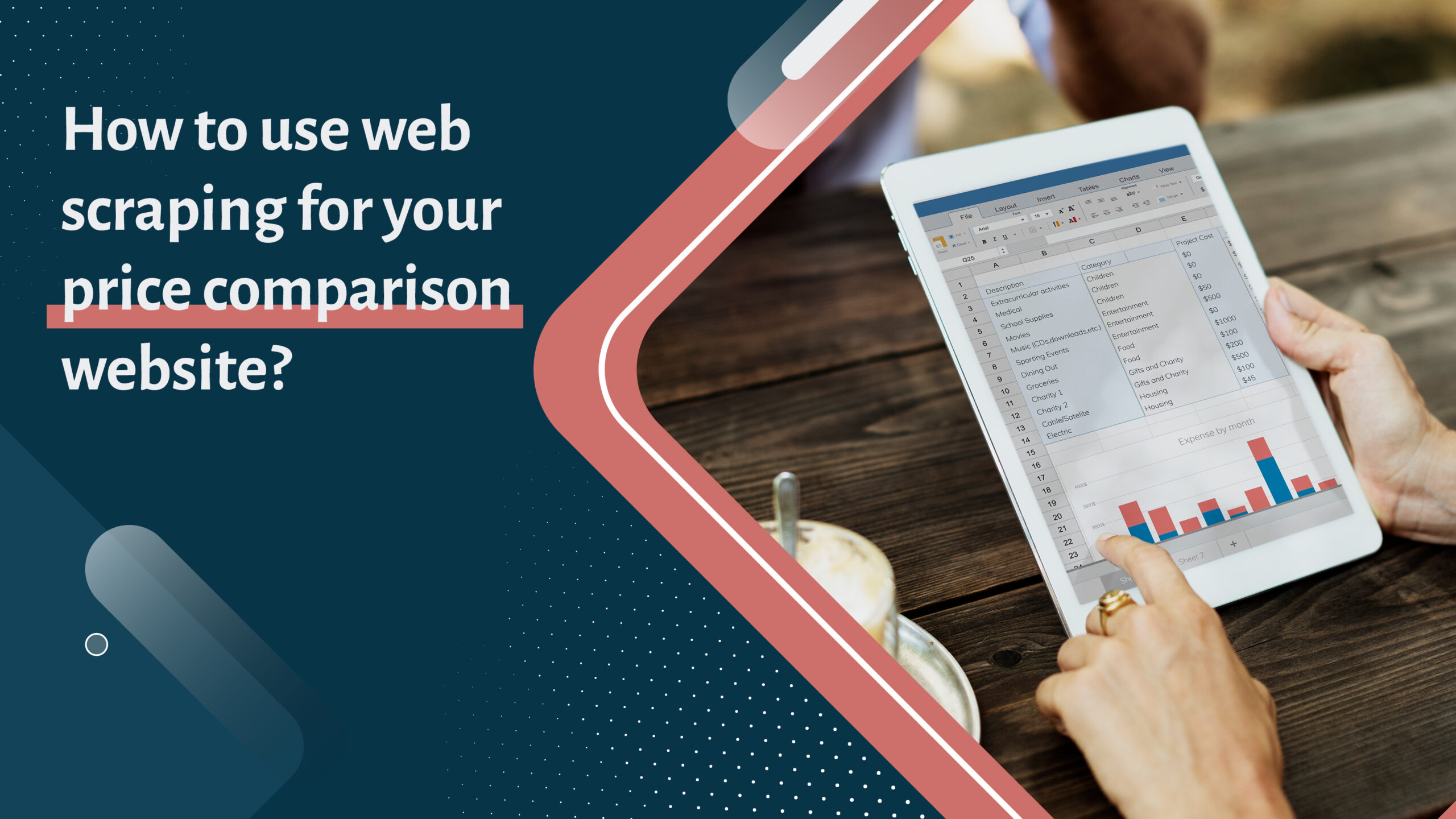We live in a world with a vast online marketplace, and finding the best deals and prices for the products can be a real challenge. But we are grateful for the technology that offers the solution called Web Scraping. If you plan to build a price comparison website, web scraping can be very helpful.
In this blog, we’ll examine the magic of web scraping and how it helps you boost your price comparison game, all while keeping an eye on retail prices with a technique known as “retail price monitoring.” So let’s get started.
What is Web Scraping?
Imagine you are collecting information from different websites, like the prices of products. Instead of visiting every website and copying the data, web scraping does the work for you. Web Scraping works like a digital robot that goes to websites, collects data and gives it back to you. That’s cool.

Why use Web Scraping for Price Comparison?
It is a lot of work to run a price comparison website. You will have to gather prices from different online stores. This is where the web scraping comes in role play. It helps you gather prices from various websites and creates an up-to-date comparison.
Price comparison websites are your trustworthy shopping pals. They collect prices for the same goods from many online stores and display them for you to view. It’s like having an entire team of helpful hands directing you to the best bargain on that gleaming new item you’ve been coveting.
What are the Steps to use Web Scraping for your Price Comparison Website?
1. Plan your scraping
You should plan before you start scraping. Also, you should be precise with your needed information: prices, product names, or something else. Ensure the websites you scrape permit you and allow you to scrape the information. Some websites are against the scraping process, so you should avoid those websites.
2. Choose the appropriate web scraping tool
There are readily accessible tools for scraping websites, including Python’s Beautiful Soup and Scrapy. They act as scraping assistants. They are simple to use and do not require you to be a coding expert.
3. Write your scraping code
The lines of code are easy, and you can write with the help of your chosen tool. So, don’t worry, it is easier than it sounds. This code asks the tool which parts of the websites to gather data from.
4. Run your code
Once you run the code, you will see the magic has happened. With your code ready, it’s time to brew the potion of retail price monitoring. The tool will visit the websites, gather all data, and neatly organize it for you. By the end, you will have your prices and other information ready to use.
5. Keep your data updated
As you know, prices fluctuate every minute, so your data needs to stay fresh and up-to-date. You can schedule your scraping tool to run at a specific time to keep up with the latest data. This way, it can help your website visitors to see the latest prices.
6. Arrange and showcase data
After keeping the data current, this is the perfect time to provide the data. Users will find it quite simple to compare prices if your website’s design is simple to use. They can maintain track of costs without going through a time-consuming process.
7. Add value to your website.
Make your website pop! To assist shoppers in making informed decisions, include features such as sorting options, product reviews, and possibly even a blog.
What are the Tips for Successful Web Scraping?
Now you know how to use web scraping for your price comparison website. Let’s get started on some web scraping tips:

Tips for Web Scraping:
- Start small: If you’re new to web scraping, start with a simple project. Focus on retrieving prices for a particular product from a few websites. As your confidence grows, you can expand your scraping efforts.
- Respect Robots.txt: Many websites contain a file called “robots.txt” that tells web crawlers (like the one you use for scraping) which parts of the site they can access. Always double-check this file to ensure you’re only scraping where it’s legal.
- Avoid overloading servers: When scraping a website, you send requests to its servers. Sending many requests too quickly at the same time can overload the servers and disrupt the website process. It can also affect the performance of the website. You can use tools with features to manage the pace of requests for scraping data.
- Regular updates: Every software needs little maintenance from time to time, and so does your website. Prices can change, websites can update, and your scrape code might need a little tweak to work smoothly. You must regularly check if everything is running smoothly to ensure accurate and up-to-date information for your users.
- Error handling: Websites may occasionally change their structure or temporarily stop working. To avoid interrupting your data collection, your scraping code should be able to handle such scenarios effectively.
- Data Cleanup: The data you scrape might contain unwanted information. Clean up the data first and then present the data on your website. This process will help users to understand and compare the information with ease.
- Ethics and Responsibility: Ethics are involved in any work we do, and with web scraping, there are a few to keep in mind. Web scraping can put a strain on website servers and can affect their performance. Before extracting the data, you should check the website’s terms of use and scraping policies. Some websites have specific rules and how you can access their information.
- Test your code: Test it on a small subset of data on the website before running the scraping code on a large scale. This way, it will help you identify and fix any issues before collecting significant data. Retail price monitoring service can be the best solution at the initial data gathering level.
Final Thoughts
Using web scraping and retail price monitoring to develop a website that compares prices is like creating your treasure map of the best online deals. With a pinch of programming knowledge, creativity, and dedication, you’ve turned an idea into a reality. Your website saves time and money and makes users’ online shopping experience more enjoyable.
Remember, the data you gather and publish is the heart of your website. Building a loyal user base requires honesty, accuracy, and user satisfaction. So keep improving your web scraping talents, stay curious, and provide a valuable service to others who enjoy unique online experiences.
With this knowledge, you are now prepared to go off on your web scraping adventure and build a pricing comparison website that will stand out in the vast online retail industry.


































![Best Video Converter Software for Windows [Free Download] Best video converter software](https://thementalclub.com/wp-content/uploads/2015/05/best-video-converter-software-100x70.png)